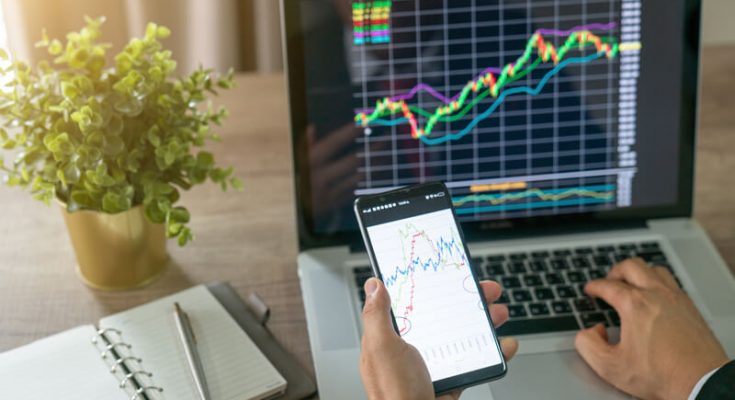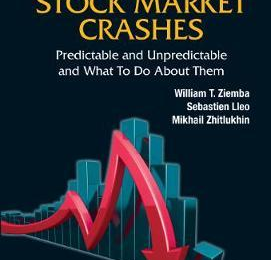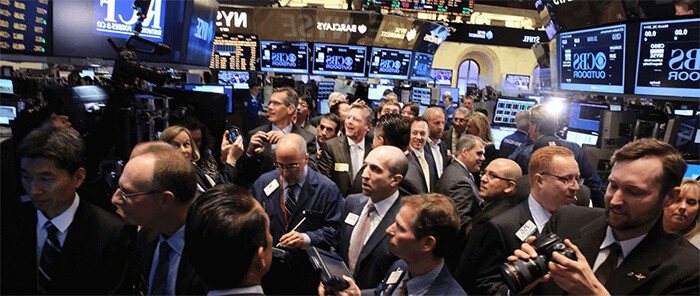
A primary trend has broad support throughout the entire market and lasts for a year or more. Rather than dwelling on whether you should be investing, think about how you’re investing. Stocks rally even when there’s negative news about the economy or a particular stock.

Bull markets occur during periods of low unemployment, low inflation, and a booming economy. The U.S. Stock Market moves through cycles of Bull and Bear markets. A Bear Market is a time period marked by a wide decline in stocks.
What is Bull vs. Bear?
One commonly used measure of risk-adjusted return is the Sharpe Ratio, which is shown in the table provided for each of the 4 individual investment methods, as well as for two very simple multi-method portfolios. Strategic Asset Allocation is the most widely utilized and accepted method of investment, based on the original work of Harry Markowitz and his researcher contemporaries in developing Modern Portfolio Theory. Supply and demand are varied when investors try to shift allocation of their investments between asset types. In each case, this will affect the price of both types of assets. A secular market trend is a long-term trend that lasts 5 to 25 years and consists of a series of primary trends. A secular bear market consists of smaller bull markets and larger bear markets; a secular bull market consists of larger bull markets and smaller bear markets.
The prices of shares in a market are usually dropping continuously. As a crypto user, you’ll inevitably run into a number of bull and bear markets. Despite their differences, crypto holders can optimise their strategies to maximise the opportunity presented in each market. Hence, it is vital to understand the dynamics of bull and bear markets.
This likely has delivered skewed results for the Wolf Market outcome. An analysis of the four investment methods in each of the four market environments using risk-adjusted performance would likely provide further enlightenment on this subject. The fact that three of the four market environments can overlap with each other makes the mutually exclusive comparative analysis used here inexact, potentially leading to further skewed results. Each of these referenced flaws represent areas for future improved research and potentially slightly different results. While anecdotal evidence for these relationships already exist, and the basic logic underlying the hypotheses makes sense, a more convincing statistical data set is still required.
Once the demand for this asset cooled off and early buyers locked in their profits, sellers outnumbered buyers, leading to a sell-off. Its prices reached a peak of approximately US$1,382 in mid-January 2018, before gradually sloping downwards and closing near the bottom of this period at about US$116. In traditional finance , the term ‘bull market’ is believed to have originated from a bull’s fighting style of thrusting its horns in an upward motion. Investors have since used this term to describe the overall market sentiment that exhibits a similar pattern — an uptrending price trajectory. Several theories exist about how bull and bear markets received their names. A bear attacks downward whereas a bull attacks upward using its horns.
The bear market often goes hand in hand with a sluggish economy, high unemployment rates and unwelcome changes in taxation. Crypto-specific problems include the state of regulation and taxation, and initial coin offerings scams. When holders sell their assets, asset prices fall, giving buyers the opportunity for potentially higher returns in the future. Some crypto users try to purchase certain crypto assets which they believe are at a low price with the intention of selling them at the peak of the next bull market. Stocks went through a quick but sharp bear market in March and April 2020 due to the coronavirus pandemic.
As a result, crypto users taking this course of action could buy a certain asset prematurely, while prices are still on a downtrend. Aside from the numbers, a bear market is also characterised by investors’ pessimistic outlook on the economy and the lack of confidence in the markets. In general, investors are extra cautious with their money during a bear market, as no one is certain when or if a bear market will end. A bear market is defined as a market condition in which asset prices have declined 20% or more from their recent highs.
How long does a bear or bull market last?
If you identify the https://forex-world.net/’s high point and then look at its percentage change decline from there and it’s over 20%, then it’s a bear market period. A bull market is an extended time period of stock values increasing and the overall stock market rising. A bear market is the opposite, a time period of stock market decline. Bull markets generally occur when the rate of employment is high, there is a strong economy, and there is low inflation. Consumers spend more, which means that businesses experience an increase in profits and contribute more to the economy. Those who invest in the market are confident due to the rising prices and they believe that the market will continue to do well.

A https://bigbostrade.com/ market is commonly defined as a drop of 20% or more and may “coincide with a weakening economy, significant liquidation of securities, and widespread negative investor sentiment,” Campbell said. However, if macroeconomic factors take an unexpected turn, resulting in a bear market, crypto users tend to reduce their positions or lock in profits by selling assets. Sourced from CoinDesk.During the same period, Ethereum also experienced a bear market.
Diversify your portfolio
In the initial stages, most market changes are psychological and may not necessarily be accompanied by robust economic information or Corporate earnings. In order to participate, a user must comply with all eligibility requirements and make a qualifying purchase with their Stock-Back® Card. All funds used for this Program will be taken from your Stash Banking account†. By using this website you agree to our Terms of Use and Privacy Policy.
As of June 2022, the S&P 500 was considered by investing experts to be in a bear market, with the value of the stocks it includes having fallen 22.2% below its record high set earlier in the year. While the duration of a bear market is difficult to predict, the S&P 500 has regained and exceeded its value after every bear market in the past. Many experts recommend that investors hold onto their stocks and ride out the market dip. This is just as important in a bearish market as it is in a bullish one because it allows you to purchase more shares when prices are low without increasing the amount of money you invest on your regular schedule.
- This was done with the expectation that stock prices would go down and the stock could be bought back at the lower price, with the difference from the selling price kept as profit.
- The bear trap is the false indication that the prices in a market are about to plummet when, in fact, they are not.
- As soon as this level was breached, it sent the coin into a euphoric bull run phase that doubled its price to US$1,800 around May 2017, and then to a high of US$19,000 by the end of the year.
- During the bearish phase, companies begin laying off workers, leading to a rise in unemployment and consequently, an economic downturn.
Bull market growth has historically been longer and more sustained than bear market periods of decline. It’s common for individual investors to get spooked by bear market headlines and suffer from loss aversion bias, where losses loom larger than gains. Tends to be higher during a bull market as companies hire more, but lower in a bear market as companies let go of workers to cut costs. In February and March 2020, the S&P 500 took a historic plunge as the result of economic turmoil and uncertainty from the COVID-19 pandemic.
All that said, most investors can’t predict exactly when a bull market will flip to a bear market and vice versa. But the expressions took on a more specific meaning among investors and stock traders, who understood the practice of speculating on an anticipated downturn. Among investors the term “bearskin trader” and eventually just “bear trader” came to refer to someone who traded stocks the same way disreputable fur traders dealt in pelts. The term bull originally referred to speculative purchases rather than general optimism about prices and trend lines. When the term first came into use it referred to when someone grabbed a stock hoping it would jump up.
In comparison, a market correction is a decline of 10% or less. Despite this threshold, the average bear market since 1929 has actually recorded declines from 30% to 40%. ” the answer is yes, according to traditional benchmarks and technical analysis. However, someone in the draw-down stage of their investment plan that is selling their assets would rather be in a bull market. This makes sense as you’d want to sell your assets at higher prices.
The sell-off is broad-based and most stocks fall, even if a company is doing well. Bear markets can hurt your portfolio, but can also be an opportunity to buy stocks cheaper. Technical AnalysisTechnical analysis is the process of predicting the price movement of tradable instruments using historical trading charts and market data. In the market with prices and trading volumes continuing to rise. You may subsequently choose to open one or more investment advisory account. To begin investing on Stash, you must be approved from an account verification perspective and open a brokerage account.
What may seem like the end of a https://forexarticles.net/ or bear market may only be a correction until a 20% price change threshold is reached. It might be challenging to tell whether we’re in a bear market or a bull market at any given point in time. It may feel like we’re in a bear market, but if the price of a particular index never reaches the 20% decline from the recent high, technical indicators still point to being in a bull market. Similarly, it may feel like we’re in a bull market, but the recent high may have peaked below the level of a previous bear market. One example is the NASDAQ exchange definition, which considers a market bearish when it breaks below its 200-day moving average. The key is knowing there is no one absolute definition of a bear market, but it’s a time when investment decisions tend to be pessimistic.
There have been several notable Bull and Bear Market time periods throughout U.S. history that have left significant impacts on the economy and society as a whole. After 2017’s then-unprecedented yearlong spike in crypto prices, the global cryptocurrency market shed more than 60% of its value by February 2018, kicking off our first official crypto winter. Prices remained relatively steady for the next few years until the crypto bull run in 2021, which again lasted for most of the year.
There are short periods at the beginning and end of each cycle where investors feel uncertain whether the market has shifted direction. In these times, the sentiments may be mixed until the economic conditions are more revealed through persistent trends. A “Risk Premium”, is the reward that can be captured by attacking a specific type of risk. The ability to capture different major risk premiums is what may make each of the categories of investment method most successful in their respective Bear, Bull, Wolf, or Eagle market environment. This realization, that specific investment methods may have respective market environments to which they are best suited, struck us as a thesis that required further testing , so we decided to pursue it further. When prices fall for an extended time and are expected to continue dropping, that’s a bear market.
It is generally accepted that a decrease of 20% or more in stock market value is considered a Bear Market. If you are invested in cryptocurrencies or stocks, you surely came across both terms. Where does the idea come from to attribute market sentiment to these specific animals?
Consider increasing your portfolio’s allocation to bonds or converting a portion of it to cash. Case in point, the rate of inflation in the U.S. is at an all time high of 9.1% due to factors like the COVID-19 pandemic and Russia Ukraine war. The rate of inflation in a bear market is often low because of low demand in the market. This in turn makes it more affordable for businesses to borrow money and scale their operations. The first recorded case of the use of the term bull with reference to the stock market was made on the London Stock Exchange in 1769. ‘Bear’ was first used in the London Stock Exchange in 1787, eight years later.

